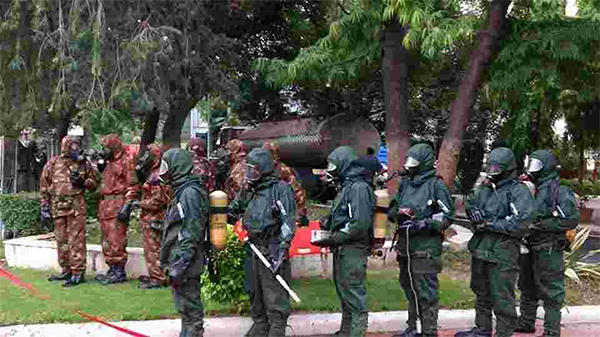
The DRDO has turned to startups and academia for at least 21 technologies to help prepare soldiers for multiple “geo-strategic” locations — ranging from high-humidity conditions to areas requiring anti-freeze equipment. The Defence Research Laboratory (DRL) will lead the development activity.
From apparel material that can prevent snake bites to formulations that can be used as alternatives to bathing or oral hygiene and from database on wild-edibles for emergency survival and real-time offline translation tools, startups and academia have been invited to team-up with DRL for these cutting-edge targeted R&D in highly challenging areas of military research and be part of India’s national self-reliance mission.
The list of 21 technologies/products is not “exhaustive” and that there would be “ample scope for dialogue on other novel ideas, products, technologies and knowledge” relevant to soldier support, protection and survival under emergency conditions.
While some of these products are currently being used by soldiers but are imported, while several others will be useful. Some of them are “essential”, some as “could be” some as aspirational technologies and products.
Technologies or products in the list like specialised fabric with protection against various hematophagous animals/insects like snakes, leeches and mosquitoes, for use in tropical rainforests; safe formulations for maintaining general health and hygiene in high-humidity regions, for instance as an alternative to bathing or oral hygiene practices; odourless or signature-free, skin-friendly formulations for protection against various hematophagous animals and database of wild-edibles (WEs) in selected regions for use during emergency survival conditions, are all targeted for the northeastern region and desert.
Among technologies and products that would have uses along the Line of Actual Control (LAC) — where there are no signs of de-escalation in eastern Ladakh — and some parts of LOC are: Light-weight flexible fabric for extremely low temperature, high altitude regions; anti-freeze water storage systems or solutions; offline real-time translator system for select languages and human waste management in low temperature, high altitude, remote, resource-poor locations.
Some of them that have uses across locations are rapid blood coagulating formulation with antimicrobial properties for combat wounds; light-weight, mine-proof, anti-spike, anti-skid, abrasion-resistant, anti-static, ankle-protecting all-weather footwear; offline, secure, encrypted, untraceable audio-video communication system for closed group users and light-weight, reusable stoves with multiple fuel options.
Some other technologies or products DRL is exploring, include a database of vectors & vector-borne disease in selected regions; on-site, rapid differential diagnostics for vector-borne/ food/ water borne pathogens; emergency water purification device; light-weight, water-resistant fabric for multipurpose use; light-weight, highly breathable fabric for use as uniform in high humidity conditions, water-repellent gloves, ergonomic all-weather abrasion-resistant gloves, etc.
Further, it is also scouting for remotely operated devices for search & surveillance operations — to detect human-activity, weapons and landmines inside dense vegetation.

















